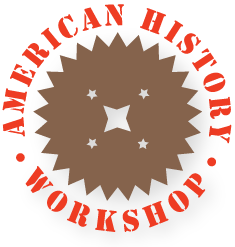A Gallery of Favorite Objects
- Orrery: For “Miracle at Philadelphia,” a 1986 exhibit, AHW represented the new federal government as a stylized 18th-century orrery, showing how “checks and balances,” the solar system of federalism, and the supremacy of the Federal Constitution drew upon contemporary ideas of mechanics.
- Iron Chink: Sometimes a single artifact opens a window to a whole world. This 1908 machine in the Seattle Museum of History and Industry carried the name of “Iron Chink” because it was meant to replace skilled Chinese butchers in the salmon canneries. The “Salmon Stakes” exhibit at MOHI interpreted the interplay of technology, capital investment, immigrant labor, ecological despoliation, and racial prejudice in the Pacific Northwest.
- I & M Canal Digger: Along the 100 miles of the Illinois and Michigan Canal, Corten steel figures like this one re-introduce the traces of human and natural history. Each is based on a documented historical figure and each animates a canal section with real stories from the past.
- Draft Lottery Wheel: The Luce Center at the New-York Historical Society features objects like this, the actual wheel from which the names of conscripts were to be drawn in July 1863. Resistance to Mr. Lincoln’s draft flared into the New York City draft riots, the worst civil insurrection in American history. Cards with the names of draftees are still inside.
- D.C. French, Four Continents: Daniel Chester French, later the sculptor of Abraham Lincoln for the memorial in Washington, created these four sculptures to sit in front of the new Custom House at Bowling Green in New York City. AHW’s exhibit modeled the building as a pedestal for French’s surviving maquettes of the figures. He interpreted the continents through the lens of prevailing prejudices in newly imperialist US – Asia shrouded in ancient mysteries, America striding forward, Europe enriched by conquest and civilization, Africa asleep in ignorance.
- The “Idea-barrow”: AHW’s exhibit for the NYC Parks Council included a wheelbarrow full of good ideas for new parks and new park uses derived from interviews with citizens.
Wonderful images and objects glisten in the archives of AHW projects. Here are a few favorites, drawn by Richard Hoyen, a valued design collaborator –
with a word about what makes them special. Click on a thumbnail sketch to explore.







